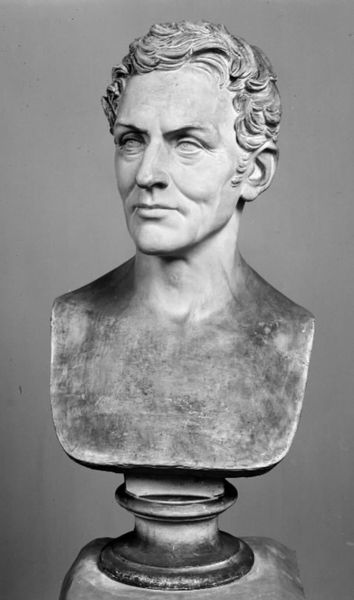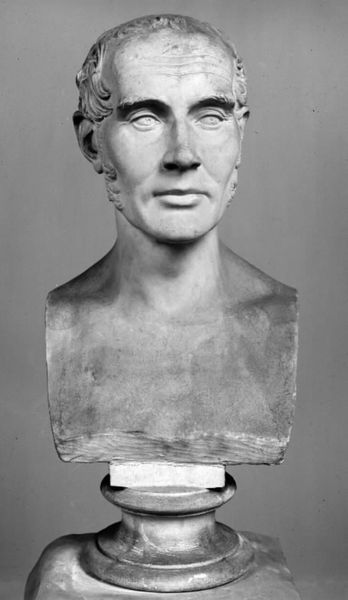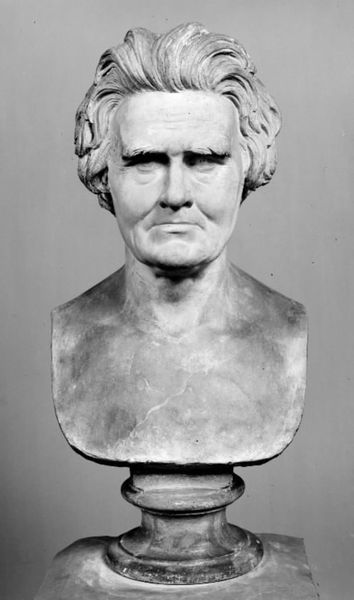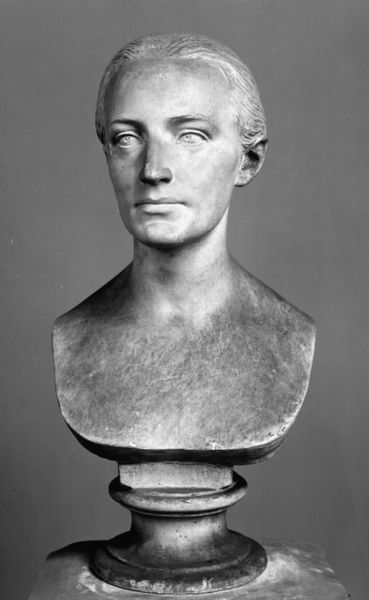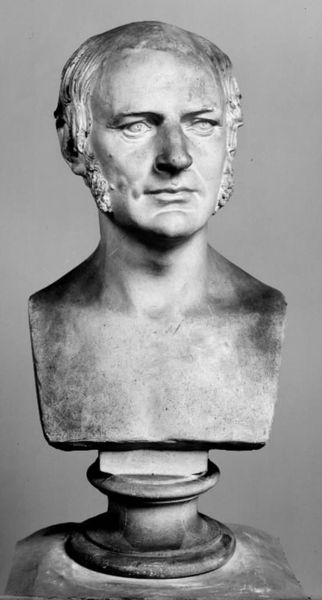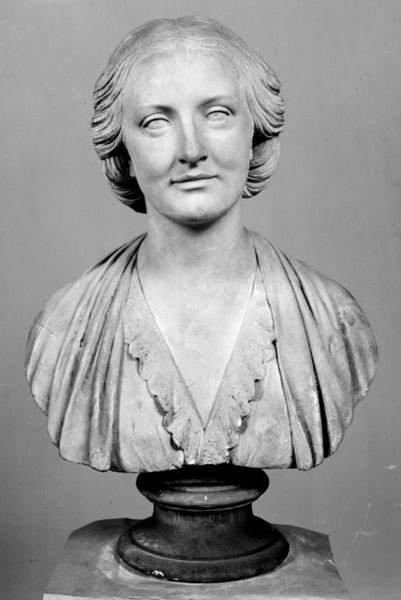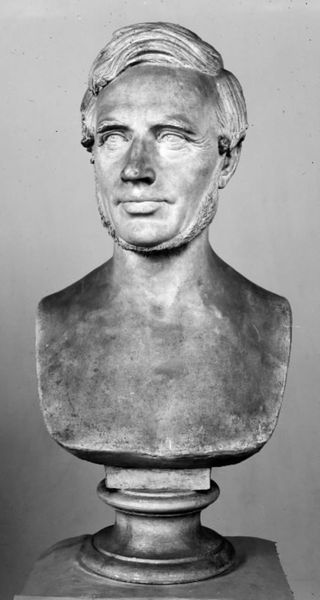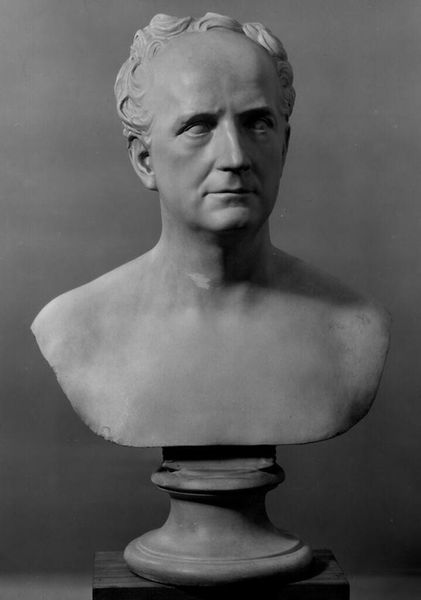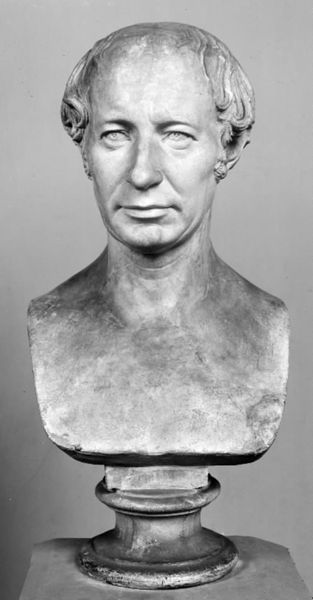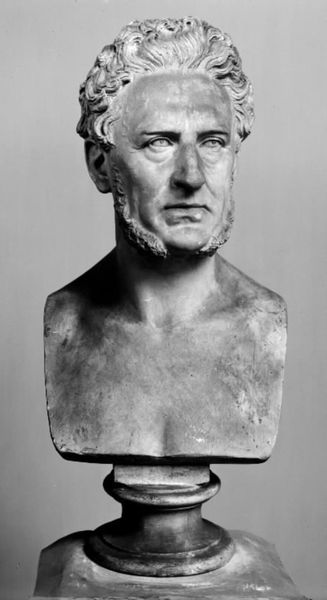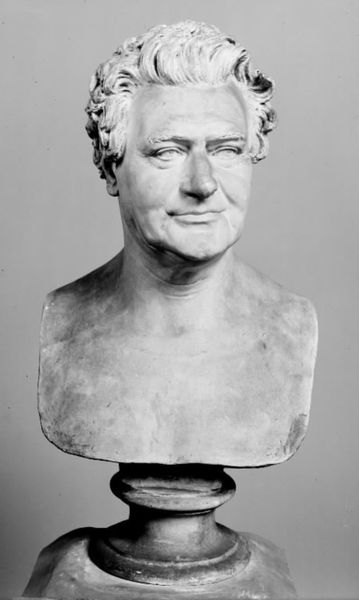
sculpture, marble
#
portrait
#
portrait image
#
portrait
#
frontview face
#
male portrait
#
portrait reference
#
portrait head and shoulder
#
classicism
#
sculpture
#
black and white
#
portrait drawing
#
facial portrait
#
marble
#
digital portrait
Dimensions: 65 cm (height) (Netto)
Curator: Here we have H.W. Bissen's 1864 marble bust, "The Reverend Johannes Fibiger," held here at the SMK. I am struck by its formal stoicism. Editor: The austerity is definitely front and center. The marble, while beautiful, contributes to the feeling of remove, almost as if this is more of a public monument than a portrait of an individual. Curator: Right, and consider the historical context. We’re in the mid-19th century; Danish society was wrestling with significant shifts in religious and national identity. Figures like Fibiger played a pivotal role in these discussions, often becoming symbols of particular ideologies or social values. Bissen, capturing Fibiger, is also immortalizing this societal discourse, in a way, encoding power. Editor: It's not just societal power, but the material power to *become* memorialized in marble. The choice of this expensive and labor-intensive material emphasizes Fibiger's status, his ability to afford such a commission but also the labour of mining, transporting and sculpting the medium is easily overlooked.. This bust speaks volumes about the resources commanded by figures like him. Curator: Indeed. And when thinking about the Rev. Fibiger, he was a really complex and very controversial person in his time, very important. This is more than an object. He was writing a lot and had particular opinions. So how is he remembered? This portrait really speaks volumes about that societal narrative that still has repercussions today. Who gets to have this permanent platform in a place like the SMK? Editor: You're right, the choice of marble suggests a kind of permanence. It also presents an interesting dichotomy. Marble can feel cold, lifeless, but the skill in rendering human form – look at the subtle curve of his lips or the suggestion of the texture in his hair – creates a fascinating tension. And I keep wondering about the sculptors involved in producing this object. How are their own ideas materially imprinted in the marble. Curator: Precisely! The interplay of material, artistic skill, and social context provides a lens for understanding societal values and the construction of identity during a specific historical moment. I’ve not been thinking that clearly about labor before… Editor: It enriches our reading, don’t you think? It always shifts how you interpret art when you consider all the forces at play in its production. Curator: Absolutely, this deepens my awareness around social inequalities. I appreciate this bust a bit differently now.
Comments
No comments
Be the first to comment and join the conversation on the ultimate creative platform.
